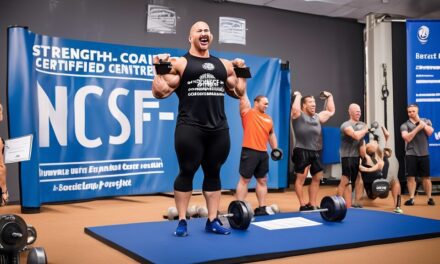Introduction to Athletic Trainer Programs
Athletic trainers are skilled professionals who work with athletes to prevent, diagnose, and treat muscle and bone injuries and illnesses. They are integral to sports teams at all levels by ensuring the health and safety of all participants. Exploring nearby athletic trainer programs can be a significant first step for those interested in pursuing a career in this dynamic field.
What to Look for in Athletic Trainer Programs
Accreditation
The most important factor when considering an athletic trainer program is its accreditation. In the United States, the Commission on Accreditation of Athletic Training Education (CAATE) is the key accrediting body. A program accredited by CAATE meets specific educational standards necessary to prepare competent entry-level Athletic Trainers.
Curriculum
An effective athletic trainer program should offer a comprehensive curriculum that covers a range of subjects such as human anatomy, physiology, nutrition, biomechanics, kinesiology, and even psychology. Courses should also include extensive clinical training in both simulated environments and real-world settings.
Faculty Expertise
The expertise and experience of faculty members can significantly influence the quality of training. Prospective students should look for programs with instructors who have current professional experience or are actively involved in research in the field of athletic training.
Facilities and Resources
High-quality training facilities are critical for advanced learning. Look for programs that have state-of-the-art equipment and modern laboratories that facilitate hands-on training. Furthermore, access to athletic teams and a variety of sports can enhance practical learning through diversified experiences.
Externship and Internship Opportunities
Hands-on experience is invaluable in this field. Programs that offer extensive and diverse externship or internship opportunities with sports teams, clinics, and rehabilitation centers will provide practical experiences that bolster a student’s skill set and resume.
Finding Athletic Trainer Programs Nearby
Online Searches
The simplest way to begin searching for programs is via online education and career websites that offer listings of athletic trainer programs. This method often provides direct links to the program websites where specific details about accreditation, curriculum, and admissions are available.
Contacting Local Universities and Colleges
Many athletic trainer programs are offered through universities and colleges. Contacting the health sciences or kinesiology departments directly can provide insights into the specific focus of the program, faculty qualifications, and detailed curriculum structures.
Professional Associations and Networking
Engaging with professional associations such as the National Athletic Trainers' Association (NATA) can be beneficial. These associations often hold conferences, workshops, and networking events where prospective students can meet professionals and learn more about different programs and career paths.
Visiting Campuses
If possible, visiting campuses can give potential students a taste of the learning environment and facilities. It also offers them an opportunity to speak with current students and faculty, gaining firsthand insight into the program’s strengths and suitability to their career goals.
Important Considerations Before Enrolling
Prior to making a final decision on an athletic trainer program, consider the length of the program, cost, and the geographical location if relocation is necessary. Also, think about class size and student-to-faculty ratios, as these can affect the amount of personalized attention and mentoring a student might receive. Finally, research the program’s success rates, specifically looking at board pass rates and job placement rates after graduation.
Conclusion
Choosing the right athletic trainer program is a pivotal decision that can shape one's career path significantly. By thoroughly researching and considering all the essential factors outlined above, prospective students can select a program that not only meets educational standards but also aligns with their professional aspirations and goals.





